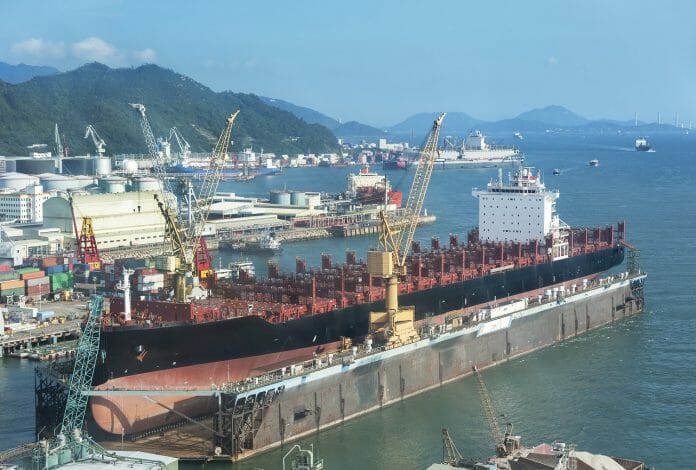With export increasing as nations open their trade borders, liner operators are increasingly postponing their dry-dockings as they look to keep vessels operational to meet the surge in demand for container shipments. However this postponement could have a long term on the ships itself, if they are not scheduled for proper maintenance.
“Container ship owners want to push dry-docking schedules as much as possible because of the high freight rates and capacity shortage,” said John Drew, Director, Nippon Paint Marine (Europe).
“Although the shipowner’s classification society has the final say in accepting any plans to postpone a five-year dry-docking, we are beginning to see deferments of several months.”
According to the coatings’ manufacturer, the marine coating division of Japan’s Nippon Paint Group, postponed dry-dockings could possibly impair the long-term performance of hull coatings, possibly resulting in increased fouling, fuel consumption and emissions.
Most coating systems are designed to perform reliably for 60 months. Hull performance must to be monitored very closely indeed if dry-dockings are to be postponed as any commercial gain from a bullish market could be lost.
According to the paint specialist hull coatings have a very precise service period calculated at the time of application and based on many variables. As a coatings manufacturer the company advise that ship operators follow the application and performance guidelines for coatings designed with a 60-month operating window.
The long delays past the 60-month dry-docking life could ultimately result in extra surface preparation requirements when ships eventually do enter dry-dock.
“In the worst case, the hull may need to be blasted. This can add to the vessel’s in-dock time and will be more costly. There is also the environmental aspect to consider,” said Drew.
Some major operators set to dock ships at yards in China during January and February have deferred their plans until market demand abates, apparently creating empty slots at the yards. This could cause a repair yard capacity issue later when the market readjusts. Any major changes to the sector’s current dry-docking schedules are likely to have commercial repercussions later, possibly for both yard and owner.
Nippon Paint Marine, the world’s fifth largest coatings producer, recently launched a completely new antifouling system based on hydrophilic and hydrophobic nano domain technology. FASTAR is a self-polishing antifouling paint that incorporates a unique nano-domain resin structure designed to minimise the effect that seawater temperatures, vessel speeds and other external factors have on coating performance.









